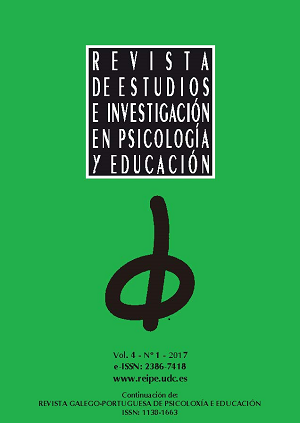Perception of phonemes in noise environments, in people who usually use headphones
Main Article Content
Abstract
Keywords:
Downloads
Article Details
References
Bailey, B. J., Johnson, J. T., & Newlands, S. D. (Eds.). (2006). Head & neck surgery--otolaryngology (Vol. 1). Lippincott Williams & Wilkins.
Cainer, K. E., James, C., & Rajan, R. (2008). Learning speech-in-noise discrimination in adult humans. Hearing Research, 238(1), 155-164. https://doi.org/10.1016/j.heares.2007.10.001
Cervera, T. (2014). Elaboración de una versión reducida de las listas de frases en español (vr-LFE) para evaluar la percepción del habla con ruido. Revista De Logopedia, Foniatría y Audiología, 34(1), 32-39. https://doi.org/10.1016/j.rlfa.2013.07.007
Cervera, T., & González-Alvarez, J. (2010). Lists of spanish sentences with equivalent predictability, phonetic content, length, and frequency of the last word. Perceptual and Motor Skills, 111(2), 517-529. https://doi.org/10.1016/j.rlfa.2013.07.007
Charbotel, B., Croidieu, S., Vohito, M., Guerin, A. C., Renaud, L., Jaussaud, J., & Bergeret, A. (2009). Working conditions in call-centers, the impact on employee health: a transversal study. Part II. International archives of occupational and environmental health, 82(6), 747-756. https://doi.org/10.1007/s00420-008-0351-z
Chepesiuk, R. (2005). Decibel hell. Environmental Health Perspectives, A35-A41. https://doi.org/10.1289/ehp.113-a3
Hernández, D. D. F., & Sánchez, D. F. G. (2011). Relación entre la pérdida de la audición y la exposición al ruido recreativo. An Orl Mex 56(1), 15-21. http://www. medigraphic.com/pdfs/anaotomex/aom-2011/aom111c.pdf
Gavhed, D., & Toomingas, A. (2007). Observed physical working conditions in a sample of call centers in sweden and their relations to directives, recommendations and operators’ comfort and symptoms. International Journal of Industrial Ergonomics, 37(9), 790-800. https://doi.org/10.1016/j.ergon.2007.06.006
Gurlekian, J. A., Babnik, E., & Torres, H. M. (2008). Desarrollo de una prueba de inteligibilidad de habla en ambientes ruidosos para niños en edad escolar. Revista de Logopedia, Foniatría y Audiología, 28(3), 138-148. https://doi.org/10.1016/S0214-4603(08)70052-4
Kenna, M. A. (2008). Music to your ears: Is it a good thing? Acta Paediatrica, 97(2), 151-152. https://doi.org/10.1111/j.16512227.2007.00655.x
Lehto, L., Laaksonen, L., Vilkman, E., & Alku, P. (2008). Changes in objective acoustic measurements and subjective voice complaints in call center customer-service advisors during one working day. Journal of Voice, 22(2), 164-177. https://doi.org/10.1016/j.jvoice.2006.08.010
Massa, C. G. P., Rabelo, C. M., Moreira, R. R., Matas, C. G., Schochat, E., & Samelli, A. G. (2012). P300 in workers exposed to occupational noise. Brazilian journal of otorhinolaryngology, 78(6), 107-112. https://doi.org/10.5935/1808-8694.20120042
McBride, D. I., & Williams, S. (2001). Audiometric notch as a sign of noise induced hearing loss. Occupational and Environmental Medicine, 58(1), 46-51. https://doi.org/10.1136/oem.58.1.46
Munar, E., Rosselló, J., Mas, C., Morente, P., & Quetgles, M. (2002). El desarrollo de la audición humana. Psicothema, 14(2), 247-254. http://www. psicothema.com/pdf/716.pdf
Patel, J. A., & Broughton, K. (2002). Assessment of the noise exposure of call center operators. The Annals of Occupational Hygiene, 46(8), 653-661. https://doi.org/10.1093/annhyg/mef091
Peng, J., Tao, Z., & Huang, Z. (2007). Risk of damage to hearing from personal listening devices in young adults. Journal of Otolaryngology, 36(3), 179-183. https://doi.org/10.2310/7070.2007.0032
Smagowska, B. (2010). Noise at workplaces in the call center. Archives of Acoustics, 35(2), 253-264. https://doi.org/10.2478/v10168-010-0024-2
Trompette, N., & Chatillon, J. (2012). Survey of noise exposure and background noise in call centers using headphones. Journal of Occupational and Environmental Hygiene, 9(6), 381-386. https://doi.org/10.1080/15459624.2012.680852
Vergara, E. F., Steffani, J., Gerges, S. N., & Pedroso, M. A. (2006). Uncertainties assessment of noise dose for telemarketing operators (headphone users). Memorias del Simposio De Metrología. Santiago de Querétaro, México, 25-17 de octubre de 2006. Recuperado de: http://www.cenam.mx/memsimp06/Trabajos%20Aceptados%20para%20CD/Octubre%2027/Bloque%20F/F5-ACUSTICA/F5-1.pdf
Vogel, I., Verschuure, H., van der Ploeg, C. P., Brug, J., & Raat, H. (2009). Adolescents and MP3 players: Too many risks, too few precautions. Pediatrics, 123(6), e953-8. https://doi.org/10.1542/peds.2008-3179
Zaragozano, J. F. (2008). Consumo de música y sordera; otro riesgo para nuestros adolescentes. Aragón, La Rioja y Soria, 69. http://spars. es/wp-content/uploads/2015/10/Bol-SPARS-2008-vol-38-n3.pdf#page=5
World Health Organization. (2015). Hearing loss due to recreational exposure to loud sounds: a review. Disponible en: http://apps.who.int/iris/bitstream/10665/154589/1/9789241508513_eng.pdf



